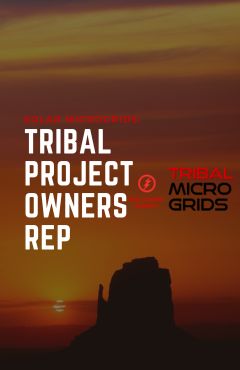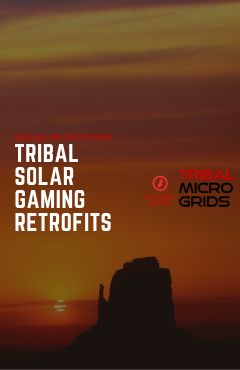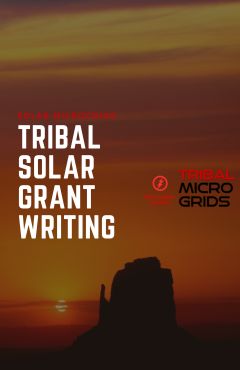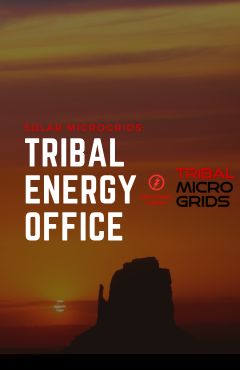Unlock Your Tribal Community’s Energy Potential with Our Expert Tribal Energy Consulting Teams
Introduction: Empowering Tribal Communities Through Energy Independence
In the heart of Native American lands, a powerful transformation is taking root. Tribal communities across the United States are awakening to the immense potential that lies within their territories – not just in terms of cultural heritage and natural resources, but in the realm of energy production and self-sufficiency. The journey towards energy independence is more than a mere shift in power generation; it’s a path to economic prosperity, environmental stewardship, and the reinforcement of tribal sovereignty.
As we delve into this comprehensive exploration of tribal energy potential, we invite you to envision a future where your community harnesses its own power, both literally and figuratively. This is not a distant dream, but a tangible reality that many tribes are already embracing with the help of expert energy consulting teams.
The landscape of energy production is rapidly evolving, and tribal lands are at the forefront of this revolution. With vast expanses of sun-drenched deserts, wind-swept plains, geothermal hotspots, and rushing rivers, Native American territories are uniquely positioned to become powerhouses of renewable energy. However, the journey from potential to production is complex, requiring not just natural resources, but also expertise, planning, and strategic partnerships.
This is where the synergy between tribal wisdom and modern energy consulting comes in. By combining the deep understanding of the land that tribes possess with the technical know-how of energy experts, we can unlock unprecedented opportunities for sustainable development and economic growth.
Throughout this article, we will navigate the intricate landscape of tribal energy development, exploring everything from the basics of renewable energy technologies to the nuances of federal programs and financing options. We’ll delve into real-world case studies, discuss the challenges and triumphs experienced by other tribes, and provide a roadmap for your community to embark on its own energy revolution.
Our goal is not just to inform, but to inspire and empower. By the end of this journey, you’ll have a comprehensive understanding of how to assess your tribe’s energy potential, navigate the complexities of project development, and collaborate effectively with energy consulting teams to bring your vision to life.
So, let’s embark on this transformative journey together, unlocking the energy potential that lies dormant in your tribal lands and paving the way for a future of independence, prosperity, and sustainability.
The Importance of Energy Sovereignty for Native American Tribes
Energy sovereignty is more than just a buzzword for Native American tribes; it’s a fundamental aspect of self-determination and economic empowerment. At its core, energy sovereignty refers to a tribe’s ability to control its own energy resources, production, and distribution. This concept is deeply intertwined with the broader goals of tribal sovereignty and self-governance.
Historically, many tribal communities have been dependent on external energy sources, often supplied by large utilities or energy companies. This dependence has not only resulted in high energy costs for tribal members but has also meant that the economic benefits of energy production flow out of the community rather than circulating within it.
By pursuing energy sovereignty, tribes can:
- Reduce Energy Costs: By producing their own energy, tribes can potentially lower energy costs for their members, addressing issues of energy poverty that disproportionately affect Native American communities.
- Create Economic Opportunities: Energy projects can create jobs, stimulate local economies, and generate revenue for tribal governments. These economic benefits can be reinvested in community development, education, and other vital services.
- Enhance Self-Determination: Control over energy resources allows tribes to make decisions that align with their values, cultural practices, and long-term goals. This includes choosing environmentally friendly energy sources that protect sacred lands and natural resources.
- Improve Energy Security: By developing local energy resources, tribes can reduce their vulnerability to external disruptions in energy supply, enhancing community resilience.
- Address Climate Change: Many tribes are on the front lines of climate change impacts. By transitioning to renewable energy sources, tribes can contribute to global efforts to reduce carbon emissions while also adapting to changing environmental conditions.
- Preserve Cultural Heritage: Energy projects can be designed in ways that respect and preserve cultural sites and traditional land uses, ensuring that economic development doesn’t come at the cost of cultural erosion.
Pursuing energy sovereignty is not without its challenges. It requires significant investment, technical expertise, and often, complex negotiations with federal and state governments. However, the potential rewards are substantial, offering a path to greater autonomy, economic stability, and cultural preservation.
Moreover, energy sovereignty aligns with the traditional values of stewardship and respect for the earth that are central to many Native American cultures. By developing sustainable energy projects, tribes can honor these values while meeting the needs of modern communities.
As we move forward in this article, we’ll explore how expert energy consulting teams can help tribal communities navigate the path to energy sovereignty, addressing challenges and capitalizing on unique opportunities. The journey to energy independence is complex, but with the right partners and a clear vision, it’s a journey that can transform the future of tribal nations.
9. Community Engagement and Education in Energy Initiatives
- 1. Understanding the Current Energy Landscape in Tribal Communities
- 2. Challenges Faced by Tribal Communities in Energy Development
- 3. Renewable Energy Options for Tribal Lands
- 4. The Future of Tribal Energy: Emerging Technologies and Trends
- 5. Steps to Initiate Your Tribal Energy Project
- 6. Maximizing Economic Benefits for Your Tribal Community
- 7. Energy Storage Solutions for Tribal Communities
- 8. The Role of Policy in Advancing Tribal Energy Sovereignty
- 9. Community Engagement and Education in Energy Initiatives
- 10. Measuring and Reporting Energy Project Impacts
- 11. Frequently Asked Questions About Tribal Energy Consulting
- 12. Conclusion: Embracing a Sustainable Energy Future for Tribal Nations
Community engagement and education are crucial components of successful tribal energy initiatives. Effective engagement ensures that energy projects align with community values and needs, while education empowers tribal members to participate in and benefit from energy development.
Importance of Community Engagement and Education:
- Building Support:
- Increases community buy-in for energy projects
- Helps overcome skepticism or resistance to new technologies
- Ensuring Relevance:
- Aligns energy initiatives with community priorities and values
- Identifies potential issues or concerns early in the planning process
- Empowering Participation:
- Enables community members to make informed decisions about energy options
- Creates opportunities for community members to actively participate in energy projects
- Capacity Building:
- Develops local expertise in energy issues
- Prepares community members for potential job opportunities in the energy sector
- Cultural Integration:
- Ensures energy projects respect and support cultural values and practices
- Identifies opportunities to integrate traditional knowledge into energy initiatives
- Long-term Sustainability:
- Builds a foundation of understanding for ongoing energy management
- Encourages energy-conscious behaviors that support project goals
Strategies for Effective Community Engagement:
- Early and Continuous Involvement:
- Begin engagement at the earliest stages of energy planning
- Maintain ongoing communication throughout project development and implementation
- Diverse Engagement Methods:
- Hold community meetings and workshops
- Conduct surveys and interviews
- Use social media and online platforms for broader reach
- Organize site visits to existing energy projects
- Culturally Appropriate Communication:
- Use the tribal language where appropriate
- Respect traditional decision-making processes
- Incorporate cultural elements into engagement activities
- Inclusive Participation:
- Ensure representation from all segments of the community, including elders, youth, and different family groups
- Address barriers to participation (e.g., transportation, childcare)
- Transparent Information Sharing:
- Provide clear, accessible information about energy options and their impacts
- Be open about potential challenges as well as benefits
- Active Listening:
- Create opportunities for community members to share their perspectives and concerns
- Demonstrate how community input is incorporated into project plans
- Capacity Building Focus:
- Include educational components in all engagement activities
- Offer training opportunities related to energy projects
- Youth Engagement:
- Develop school programs on energy and sustainability
- Create internship or mentorship opportunities in energy projects
- Celebrate Milestones:
- Organize community events to mark significant project milestones
- Publicly recognize community contributions to energy initiatives
Key Topics for Community Energy Education:
- Basic Energy Concepts:
- How electricity is generated, transmitted, and used
- Understanding energy units and billing
- Renewable Energy Technologies:
- How solar, wind, geothermal, and other renewable technologies work
- Benefits and challenges of different renewable energy options
- Energy Efficiency:
- Simple ways to reduce energy consumption at home and work
- Understanding energy audits and efficiency upgrades
- Energy Economics:
- How energy projects can benefit the tribal economy
- Understanding energy markets and pricing
- Environmental Impacts:
- Environmental benefits of clean energy
- Potential local environmental considerations of energy projects
- Energy Sovereignty:
- What energy sovereignty means for the tribe
- How energy projects can support tribal self-determination
- Career Opportunities:
- Types of jobs in the energy sector
- Educational pathways for energy careers
- Traditional Knowledge and Energy:
- Connections between traditional practices and modern energy systems
- Integrating traditional ecological knowledge into energy planning
- Energy Policy:
- Basic understanding of policies affecting tribal energy development
- How community members can engage in energy policy discussions
Educational Approaches and Tools:
- Hands-on Workshops:
- Practical sessions on topics like basic electrical work or solar panel installation
- Energy auditing workshops for homes and businesses
- Community Energy Centers:
- Establish physical locations where community members can learn about energy
- Include interactive displays and information about local energy projects
- School Curriculum Integration:
- Work with local schools to incorporate energy education into science and social studies curricula
- Develop culture-based energy education materials
- Energy Fairs and Exhibitions:
- Organize events showcasing energy technologies and local projects
- Invite energy companies and organizations to share information
- Digital Learning Platforms:
- Develop online courses or webinars on energy topics
- Use social media to share energy tips and project updates
- Community Energy Champions:
- Train community members to serve as local energy educators and advocates
- Support peer-to-peer learning and mentoring
- Site Visits and Tours:
- Organize visits to energy projects on tribal lands or in nearby communities
- Provide behind-the-scenes tours of tribal energy facilities
- Traditional Knowledge Sharing:
- Organize events where elders can share traditional perspectives on resource use and conservation
- Document and share stories connecting traditional practices to modern energy concepts
- Energy Saving Competitions:
- Organize friendly competitions to encourage energy-saving behaviors
- Provide recognition and rewards for energy conservation efforts
- Visual Arts and Storytelling:
- Use traditional art forms to communicate energy concepts
- Develop graphic novels or animations explaining energy projects
Case Studies in Community Engagement and Education:
- Pueblo of Jemez Solar Project:
- Conducted extensive community outreach before and during project development
- Integrated solar education into local school curriculum
- Trained tribal members in solar installation, creating local job opportunities
- Blue Lake Rancheria Microgrid:
- Held regular community meetings throughout project planning and implementation
- Developed educational programs around microgrid technology and resilience
- Created a public dashboard showing real-time energy data to engage the community
- Fond du Lac Band of Lake Superior Chippewa Energy Education:
- Established a comprehensive energy education program for tribal members
- Integrated energy education into cultural events and gatherings
- Developed a youth energy internship program
Steps for Developing a Community Engagement and Education Plan:
- Assess Community Needs and Interests:
- Conduct surveys or focus groups to understand energy knowledge levels and interests
- Identify key concerns or questions about energy development
- Set Clear Objectives:
- Define what you want to achieve through engagement and education efforts
- Establish measurable goals for community participation and learning
- Identify Target Audiences:
- Recognize different segments of the community that may need tailored approaches
- Consider age groups, education levels, and roles within the community
- Develop Engaging Content:
- Create educational materials that are accessible and culturally relevant
- Use a variety of formats to cater to different learning styles
- Choose Appropriate Engagement Methods:
- Select a mix of engagement strategies based on community preferences and needs
- Plan for both one-time events and ongoing engagement opportunities
- Allocate Resources:
- Secure funding for engagement and education activities
- Identify staff or volunteers to lead engagement efforts
- Implement the Plan:
- Roll out engagement and education activities according to the plan
- Be prepared to adapt based on community feedback
- Monitor and Evaluate:
- Regularly assess the effectiveness of engagement and education efforts
- Gather feedback from participants and adjust strategies as needed
- Celebrate and Share Successes:
- Recognize community achievements in energy education and conservation
- Share success stories to maintain momentum and interest
By prioritizing community engagement and education, tribal energy initiatives can build strong foundations of support and understanding. This not only enhances the success of individual projects but also contributes to broader goals of energy sovereignty and community empowerment. Effective engagement and education create a knowledgeable, involved community that can actively participate in shaping its energy future.
9. Community Engagement and Education in Energy Initiatives
- 1. Understanding the Current Energy Landscape in Tribal Communities
- 2. Challenges Faced by Tribal Communities in Energy Development
- 3. Renewable Energy Options for Tribal Lands
- 4. The Future of Tribal Energy: Emerging Technologies and Trends
- 5. Steps to Initiate Your Tribal Energy Project
- 6. Maximizing Economic Benefits for Your Tribal Community
- 7. Energy Storage Solutions for Tribal Communities
- 8. The Role of Policy in Advancing Tribal Energy Sovereignty
- 9. Community Engagement and Education in Energy Initiatives
- 10. Measuring and Reporting Energy Project Impacts
- 11. Frequently Asked Questions About Tribal Energy Consulting
- 12. Conclusion: Embracing a Sustainable Energy Future for Tribal Nations





